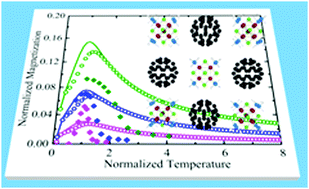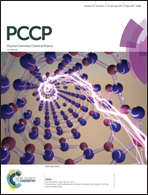Magnetic behavior of superatomic-fullerene assemblies
Abstract
It has recently been possible to synthesize ordered assemblies composed of magnetic superatomic clusters Ni9Te6(PEt3)8 separated by C60 and study their magnetic behavior. We have carried out theoretical studies on model systems consisting of magnetic superatoms separated by non-magnetic species to examine the evolution in magnetic response as the nature of the magnetic superatom (directions of spin quantization), the strength of isotropic and anisotropic interactions, the magnetic anisotropy energy, and the size of the assembly are varied. We have examined square planar configurations consisting of 16, 24 and 48 sites with 8, 12 and 24 magnetic superatoms respectively. The magnetic atoms are allowed 2 or 5 orientations. The model Hamiltonian includes isotropic exchange interactions with second nearest neighbor ferromagnetic and nearest neighbor antiferromagnetic couplings and anisotropic Dzyaloshinskii–Moriya interactions. It is shown that the inclusion of Dzyaloshinskii–Moriya interaction that cause spin canting is necessary to get qualitative response as observed in experiments.

- This article is part of the themed collection: 2017 PCCP HOT Articles

 Please wait while we load your content...
Please wait while we load your content...